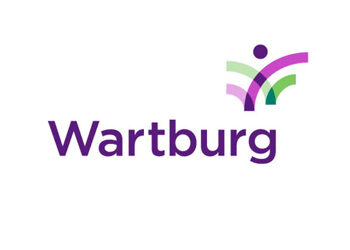
It is not uncommon to believe that long-term home care and nursing home costs are covered by one”™s Medicare coverage. Unfortunately, that belief is far from the truth. The only thing that Medicare and Medicaid have in common is that they sound alike and are both government health programs.
Medicare is a health insurance program offered to those sixty-five (65) years of age and older, as well as to individuals under the age of 65 that have certain disabilities and illnesses, such as End Stage Renal Disease (ESRD) and ALS (“Lou Gehrig’s disease”). If during one”™s working years Medicare taxes have been paid on your earnings (automatically taken out), and you have made social security contributions, one automatically qualifies for Medicare upon attaining the age of 65.
Medicare unlike Medicaid has no income and/or resource (savings) requirements for eligibility. One”™s income and savings are of no relevance to one”™s eligibility for Medicare.
If you are automatically eligible for Medicare as above stated upon attaining age 65 you will be automatically enrolled in Parts A & B of the Medicare program which cover the following:
- Part A covers hospital care, (the cost of being in a medical facility) subject to deductibles and co-insurance programs that the insured is responsible for;
- Part B covers doctors, medical tests, some medical equipment and medical procedures. Part B coverage has a monthly premium. For 2020 the monthly premium for Part B coverage is $144.60 with an annual deductible of $198.00;
- Part C a/k/a Medicare Advantage covers what traditionally Medicare covers (generally includes Parts A, B and D) however, it often covers procedures not covered by Medicare, such as, hearing, vision and dental. This coverage is administered by private insurance companies that provide Medicare Advantage Plans; and
- Part D is Medicare”™s prescription drug program and is also administered by private insurance. The average monthly premium for part D in 2020 is $32.74.
As can be seen there is no advance planning that one can do for Medicare eligibility other than attaining employment during one”™s working years and having Medicare taxes and Social Security contributions taken out.
Unlike Medicare, Medicaid is based on financial needs. It has both income and resource (saving) requirements for one to be eligible. For example, a single person can have no more than $15,750 of non-IRA savings, their primary residence and no more than $875 per month for income. It is a program that is financed by Federal, State and County governments; and the rules for eligibility vary from state to state. Medicaid is generally available to four (4) groups:
- Someone who is pregnant and meets the financial eligibility test. The pregnant person and their child will be covered;
- The parent of a minor or if you are a teenager living alone. If you fall into either category and have a financial need (meet the income and resource eligibility requirements) the minor child or said teenager will be eligible for Medicaid;
- Aged, blind or disabled; age 65 or older and/or blind or disabled as defined by federal law. If you fall into one of the above categories you will be eligible for Medicaid if you meet the financial eligibility requirements. This group of covered individuals includes the large group of seniors and others that necessitate Medicaid coverage for nursing home care and home care. The private costs of home and nursing home care could devastate one”™s life savings if Medicaid eligibility cannot be obtained; and
- Low income individuals under the age of 65 that are not disabled and do not have a minor child, but are in need of health care will be eligible for the Affordable Care Act (Obamacare) coverage through the Medicaid Program.
For most seniors their interest in the Medicaid Program is generally focused upon eligibility for Medicaid nursing home and home care programs. Without eligibility for said programs most seniors (that do not have long term care insurance) would be forced to expend vast sums of their life savings to pay for the costs of home care and/or nursing home care in New York.
Fortunately, Medicaid, unlike Medicare, allows one to plan for their future long term care needs and eligibility for the program by transferring their non retirement savings and home(s) to an Irrevocable Medicaid Asset Protection Trust, thus, starting the 60 month look back period for Medicaid nursing home eligibility or making the same transfer to be eligible for Medicaid home care without any lookback period in New York.
In conclusion, a senior in New York has many proactive steps that can be taken in advance of their needing long term care. Taking those steps will help ensure that if they ever need nursing home care and/or care at home, they will not be faced with the prospect of spending down their life savings prior to being eligible for Medicaid.
*Anthony J. Enea is a member of Enea, Scanlan and Sirignano, LLP of White Plains, New York. He focuses his practice on Wills, Trusts and Estates and Elder Law. Mr. Enea is the Past Chair of Elder Law and Special Needs Section of the New York State Bar Association (NYSBA). He is the current Chair of the Senior Lawyer Section of the NYSBA. Mr. Enea is the Past President and Founding member of the New York Chapter of the National Academy of Elder Law Attorneys (NAELA). Mr. Enea is the President of the Westchester County Bar Foundation and a Past President of the Westchester County Bar Association. Mr. Enea can be reached at (914) 948-1500 or at a.enea@esslawfirm.com.



















